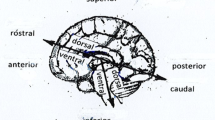Abstract
A long tradition suggests a fundamental distinction between situations of risk, where true objective probabilities are known, and unmeasurable uncertainties where no such probabilities are given. This distinction can be captured in a Bayesian model where uncertainty is represented by the agent’s subjective belief over the parameter governing future income streams. Whether uncertainty reduces to ordinary risk depends on the agent’s ability to smooth consumption. Uncertainty can have a major behavioral and economic impact, including precautionary behavior that may appear overly conservative to an outside observer. We argue that one of the main characteristics of uncertain beliefs is that they are not empirical, in the sense that they cannot be objectively tested to determine whether they are right or wrong. This can confound empirical methods that assume rational expectations.


Similar content being viewed by others
Notes
Keynes (1937) characterized uncertain beliefs as follows: “The sense in which I am using the term [uncertainty] is that in which the prospect of a European war is uncertain, or the price of copper and the rate of interest twenty years hence, or the obsolescence of a new invention, or the position of private wealth-owners in the social system in 1970. About these matters there is no scientific basis on which to form any calculable probability whatever. We simply do not know.”
The i.i.d.assumption simplifies the analysis, but is not essential to our point. We discuss this point in Sect. 4.
The terms parameter-uncertainty, model-uncertainty, or model mis-specification are often used instead of what we simply call “uncertainty.”
All events in \(S^\infty \) are assumed to be Borel sets. The space of probability measures on \(S^\infty \) is itself endowed with the weak* topology and the Borel sigma-algebra of events. All functions used in the paper are assumed measurable.
There is a 1–1 correspondence between \(P^\mu \) and \(\mu ,\) yet they are different objects: the former is a distribution on \(S^n,\) while \(\mu \) is a distribution on \(\varTheta .\)
This follows from the linearity of probabilities and the time-separability of utility: \(\int \nolimits _\varTheta \int \nolimits _{S^n} \sum _{i=1}^\infty \delta ^i u(c_i) \mathrm{d} P^\theta \mathrm{d} \mu = \sum \nolimits _{i=1}^\infty \delta ^i E_{\bar{\theta }^\mu }u(c_i)= E_{\bar{\theta }^\mu }U(c_1,\ldots , c_n).\)
For example, Hansen and Sargent (2001) write: “Knight (1921) distinguished risky events, which could be described by a probability distribution, from a worse type of ignorance that he called uncertainty and that could not be described by a probability distribution. [...] A person behaving according to Savage’s axioms has a well-defined personal probability distribution. [...] Savage’s system undermined Knight by removing the agents possible model misspecification as a concern of the model builder.”
For example, a start-up company which accumulates gains and losses to its value over a period of time, but investors are paid when the company is sold or goes public. Another example is a retirement portfolio that generates dividends each period, but the agent cares only about its value at the time of retirement.
This follows from: \(V(\mu _t,\,w_t) = (1- \delta ) E_{\mu _t}[\sum \nolimits _{l=t}^\infty \delta ^{l-t} u(c_l^*)]=(1- \delta )\sum \nolimits _{l=t}^\infty \delta ^lu(c_t^*).\)
Formally, this is concavity with respect to \(\theta \) as shown in Proposition 5.1.
Footnote 12 below discusses finite tests.
A test \(\hat{T}_n\) based on n observations cannot distinguish between knowing \(\theta _m\) with certainty and a belief \(\mu \) that puts arbitrarily large weight on \(\theta _m.\) The argument in the proposition can be modified to cover finite tests. We show this with an example: suppose that \(\mu (\theta _1)=\mu (\theta _2)=0.50\) and \(P^{\mu }\{\hat{T}_n(\mu ,\, s^\infty )=1\}\ge 1-\epsilon ,\) where \(\epsilon \) is a small positive number representing Type 1 error. This says that \(\bar{T}_n\) has small Type I error at \(\mu .\) Using the same argument as the proposition, it is easy to show that \(P^{\mu }\{\bar{T}_n(\mu ',\, s^\infty )=1\}\ge 1-2\epsilon .\)
Precautionary saving is also present under risk. The difference in period 1 consumption in the figure is the additional precautionary saving due to uncertainty.
Equivalently, investors’ risk aversion implied by the observed asset prices is an order of magnitude higher than what is considered reasonable.
References
Bewley, T. (1986). Knightian decision theory: Part I. Cowles Foundation Discussion Paper number 807.
Caballero, R. (1990). Consumption puzzles and precautionary savings. Journal of Monetary Economics, 25(1), 113–136.
Carroll, C., & Kimball, M. (2008). Precautionary saving and precautionary wealth. The New Palgrave Dictionary of Economics, 6, 579–584.
Cogley, T., & Sargent, T. (2008). Anticipated utility and rational expectations as approximations of Bayesian decision making. International Economic Review, 49(1), 185–221.
Gilboa, I., & Schmeidler, D. (1989). Maxmin expected utility with nonunique prior. Journal of Mathematical Economics, 18(2), 141–153.
Halevy, Y., & Feltkamp, V. (2005). A Bayesian approach to uncertainty aversion. Review of Economic Studies, 72(2), 449–466.
Hansen, L., & Sargent, T. (2001). Acknowledging misspecification in macroeconomic theory. Review of Economic Dynamics, 4(3), 519–535.
Keynes, J. M. (1937). The general theory of employment. The Quarterly Journal of Economics, 51(2), 209–223.
Knight, F. (1921). Risk, uncertainty and profit. New York: Harper.
LeRoy, S., & Singell, L. (1987). Knight on risk and uncertainty. The Journal of Political Economy, 95(2), 394–406.
Lewellen, J., & Shanken, J. (2002). Learning, asset-pricing tests, and market efficiency. The Journal of Finance, 57(3), 1113–1145.
Pástor, L., & Veronesi, P. (2009). Learning in financial markets. Annual Review of Financial Economics, 1(1), 361–381.
Weitzman, M. (2007). Subjective expectations and asset-return puzzles. The American Economic Review, 97(4), 1102–1130.
Author information
Authors and Affiliations
Corresponding author
Appendix
Appendix
Proof of Proposition 2.2
where the last inequality follows from the strict concavity of u.
Proof of Proposition 3.1
We first note that since we are optimizing a concave function, it suffices to show that the Euler and transversality conditions are satisfied. Applying \(u^{-1}\) to both sides of \( u(c_t^*) = E_t[u(c_{t+k}^*)]\) and substituting in (5), we can express the evolution of wealth as:
implying
Under CARA, certainty equivalents are independent of wealth, so the last equation implies that \(c_{t+1}\) has a time t certainty equivalent of \(c_t,\) which we argued earlier is equivalent to the Euler equation.
To get the formula for the evolution of consumption, note that \(\theta \) does not change in time (this is the key property of lack of uncertainty) so we can deduce from Eq. (6) that
after which substituting for \(w_{t+1}\) according to Eq. (5) and \(c_t\) from Eq. (6) gives (7). It shows that consumption, which is linear in wealth, can grow only linearly so long as f is bounded, so wealth also grows at most linearly also and the transversality condition \(\lim _{t \rightarrow \infty } (1+r)^{-t}w_t\) is satisfied with probability 1. \(\square \)
Next, we establish the concavity of the value function under risk. Note that for any lottery over two outcomes, we have:
This observation, along with the previous proposition, allows us to show:
Proposition 5.1
For known \(\theta ,\)
-
(1)
Optimal consumption is convex in \(\theta .\)
-
(2)
Value is concave in \(\theta \) for any \(r<1.\)
To illustrate the meaning of this proposition, assume that under distribution \(\theta _0\) an asset returns 0 for sure, under \(\theta _1\) it returns 1 for sure, and thus under \(\theta _2 = 0.5 \theta _0 + 0.5 \theta _1\) the asset returns 0 or 1 each period according to a series of i.i.d. coin flips. With zero wealth, optimal consumption under \(\theta _0\) is simply 0, with value u(0), and under \(\theta _1\) is 1, with value u(1). The first point then states that consumption under \(\theta _2\) is less than 0.5; this is because there is a small precautionary saving to mitigate against the risk of the next coin flip. However, value under \(\theta _2\) is greater than the average of u(0) and u(1); this is driven by consumption smoothing, as \(\theta _2\) ensures many independent coin flips and entails much less long-run risk than a lottery between \(\theta _0\) and \(\theta _1.\) There are two countervailing forces on the value, as taking a convex combination of \(\theta \)s increases the need for precautionary savings but mitigates against long-run risk. The CARA utility allows us to say that the second force dominates for \(r < 1.\) When \(r \ll 1\) as usual, the second force is much stronger and it is reasonable to think that the CARA form is not essential to this claim. It is interesting to note that if we allow \(r>1,\) the precautionary-savings effect dominates, as discounting is fast and long-run risk is unimportant (mostly the current period matters).
Proof of Proposition 5.1
Applying Proposition 3.1, the first item reduces to the statement that the certainty equivalent of a compound lottery is less than the average of the certainty equivalents of the nodes. That is,
where the last step follows from u being increasing and concave (take u of both sides to get the definition of concavity). Along with Proposition 3.1 this yields the first statement.
For the second statement, use \(V(\theta )\) as shorthand for \(V(\theta ,\,0).\) By earlier results,
Now observe that
where the last step uses (12). This shows concavity of V in \(\theta \) for w = 0. For general w, Eqs. (3.1) and (6) show that
which implies the result. \(\square \)
Proof of Lemma 3.2
The Bellman equation tells us
and we showed earlier that \(V(\mu ,\,w) = u( c^*(\mu ,\,w)),\) so the Bellman equation reduces to
and when we substitute the form in the lemma, this reduces algebraically to the Bellman equation for w = 0. This proves the result. \(\square \)
Proof of Proposition 3.3
The first inequality (in its weak form) is simply the statement that information about \(\theta \) has a non-negative value. Since the utility being optimized is strictly concave, optimal plans are unique and it is strict whenever plans differ under the two beliefs.
The second inequality follows from the first, given our earlier result that \(V(\mu ,\,w) = u( c^*(\mu ,\,w))\) and the fact that u is increasing and concave. (Assume it is false, apply u to both sides, then apply concavity to contradict the first inequality.)
The final statement follows from expressing \(\mu \) as a convex combination of point masses \(\theta _i,\) applying convexity of V with respect to \(\mu ,\) then applying concavity of V with respect to \(\theta \) (Proposition 5.1). \(\square \)
Rights and permissions
About this article
Cite this article
Al-Najjar, N.I., Weinstein, J. A Bayesian model of Knightian uncertainty. Theory Decis 78, 1–22 (2015). https://doi.org/10.1007/s11238-013-9404-1
Published:
Issue Date:
DOI: https://doi.org/10.1007/s11238-013-9404-1




